While walking through corn fields in Nebraska this year, you may find black spots are more common, but they may not be what you expect. Wetter conditions in many areas of Nebraska in 2024 have generally been more favorable for diseases. Tar spot, late (teliospore) stages of southern rust, Physoderma brown spot, and others can cause dark or black spots that are often difficult to differentiate. Although it’s too late to treat with fungicides and expect economic returns this season, it’s important to note which diseases are impacting fields because most pathogens overwinter and will cause disease again in future years when conditions are favorable again. Accurately identifying diseases during the season NOW is your first step toward effective management, whether it’s selection of disease resistant corn hybrids this winter, crop rotation with non-host crops, budgeting for a possible fungicide application next year(s), or more.
Tar Spot
Tar spot (Figure 1a and 1b), caused by the fungus Phyllachora maydis, is a relatively new corn disease in Nebraska — first confirmed in 2021. Since then, the fungus has overwintered and continued to cause tar spot under favorable conditions and is spreading further west. Distribution of tar spot is documented at the Tar Spot IPMPiPE website. In 2023, tar spot was confirmed in corn fields in counties about halfway across the state (east to west) — roughtly along the Highway 281 corridor from Hastings to O’Neill (counties shaded gray). As expected, tar spot has redeveloped in some of those same counties this growing season and continued to move westward across the state (counties shaded gold).
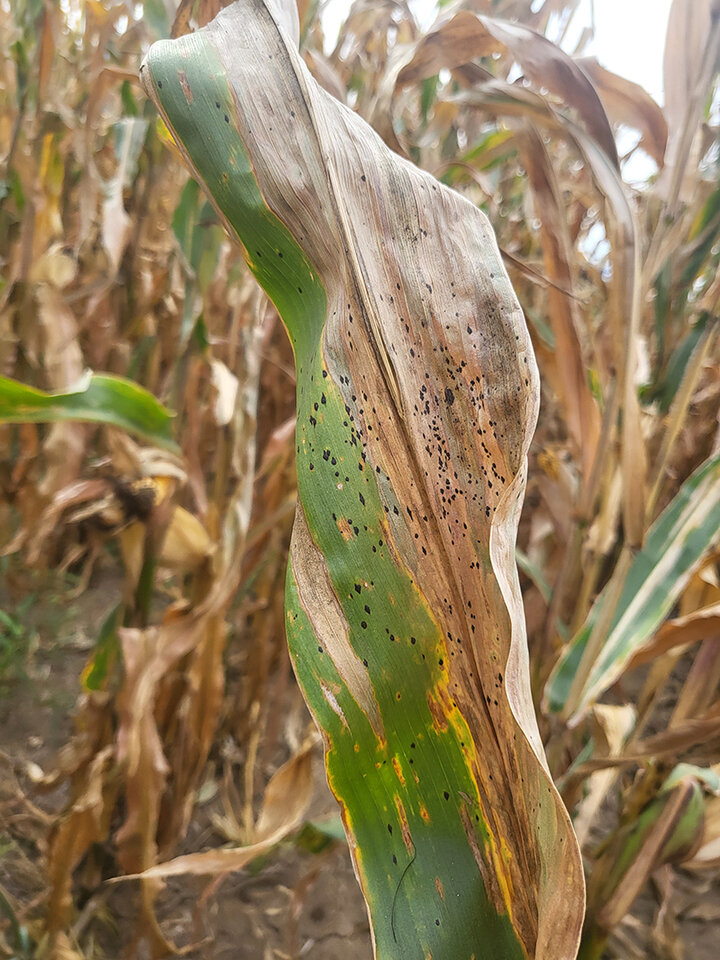
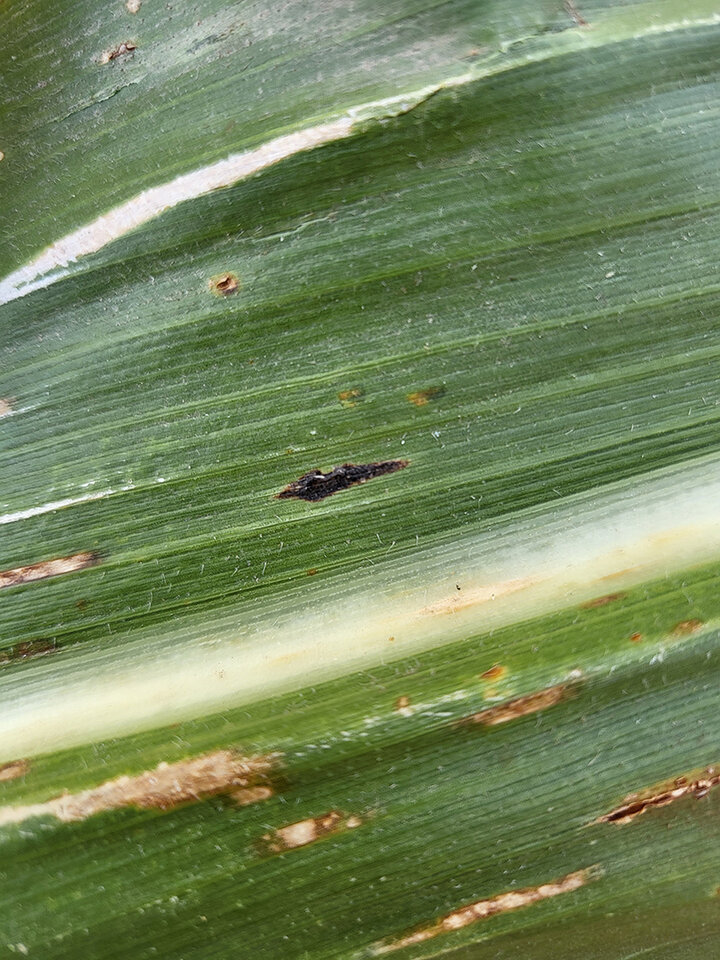
Tar spot produces small, raised black spots across the upper and lower leaf surfaces that cannot be scraped off the leaf surface. These black structures are called stromata or ascomata (a type of fungal fruiting structure) and may be circular or elongated. A tan to brown halo may surround the ascomatum, giving it a “fisheye” lesion. The fungus overwinters in our fields once disease develops. Tar spot will continue to develop on corn plants in the same areas this year and will likely continue spreading to other locations, possibly continuing westward.
Southern Rust and Common Rust
Rust diseases are common in Nebraska corn this year. Common rust (Puccinia sorghi) prefers cooler temperatures (especially averaging about 70°F) and developed earlier in the 2024 growing season and to a greater extent than normal. Dark red to brown spores can be produced on the top or bottom of leaves.
In addition, southern rust later developed and became important in some areas of the state. Southern rust (Puccinia polysora) is favored by warmer temperatures (especially averages about 80°F) and developed in mid-July in Nebraska to a wider distribution than is normal.
Southern rust pustules are generally smaller than common rust, occur mostly on the upper side of the leaf and produce orange to tan spores. Rust spores can be rubbed off pustules with a fingernail and often leave a visible mark on your finger.
It's important to note that BOTH rust fungi produce black spores later in the season (now) alongside existing rust pustules and drastically change their appearance on leaves. Both common rust and southern rust produce black, thick-walled teliospores (Figure 2a and 2b) late in the season that can easily be confused with tar spot.
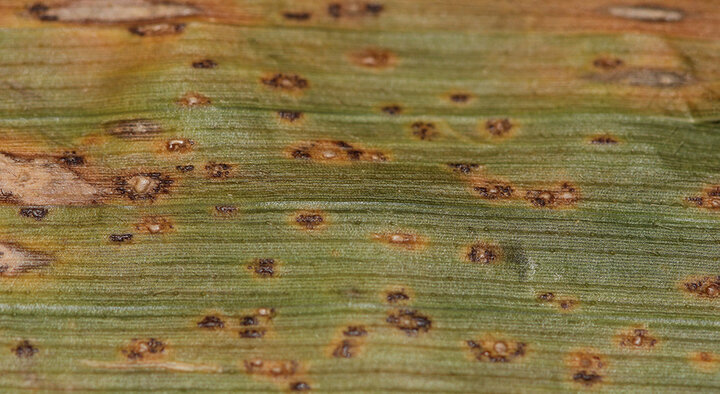
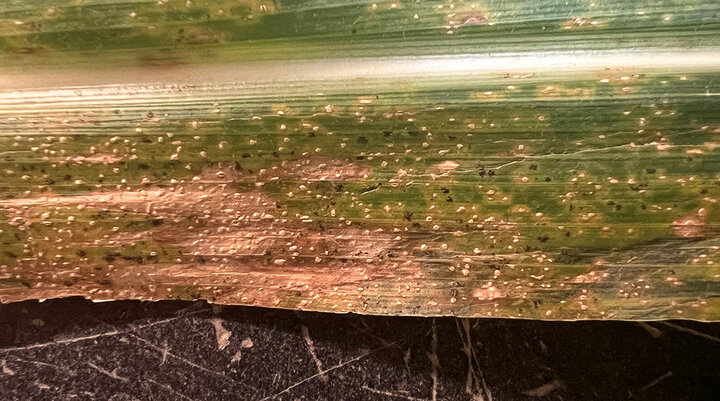
Neither fungus causing the rust diseases can overwinter in Nebraska, so having disease will not impact its development in your fields in the next growing season(s). However, rust diseases develop on corn in the subtropical areas of Mexico and extreme southern U.S. states and the spores are blown further north by south winds. Southern rust tends to be a bigger threat to dent corn (than common rust) and its distribution is tracked on the Southern Rust IPMPiPE website.
Physoderma Brown Spot
Physoderma brown spot (Figures 3a-c) (Physoderma maydis) lesions may appear black in the midrib, leaf collars and sheaths especially, but are often brown to tan on the leaf blades. Spores are inside lesions and won’t rub off. Infection occurs earlier in vegetative stages. Lesions often appear in banding patterns across the leaves, but their appearance is different depending upon whether they’re on the leaf blade versus in the midrib, where they may appear black and larger.
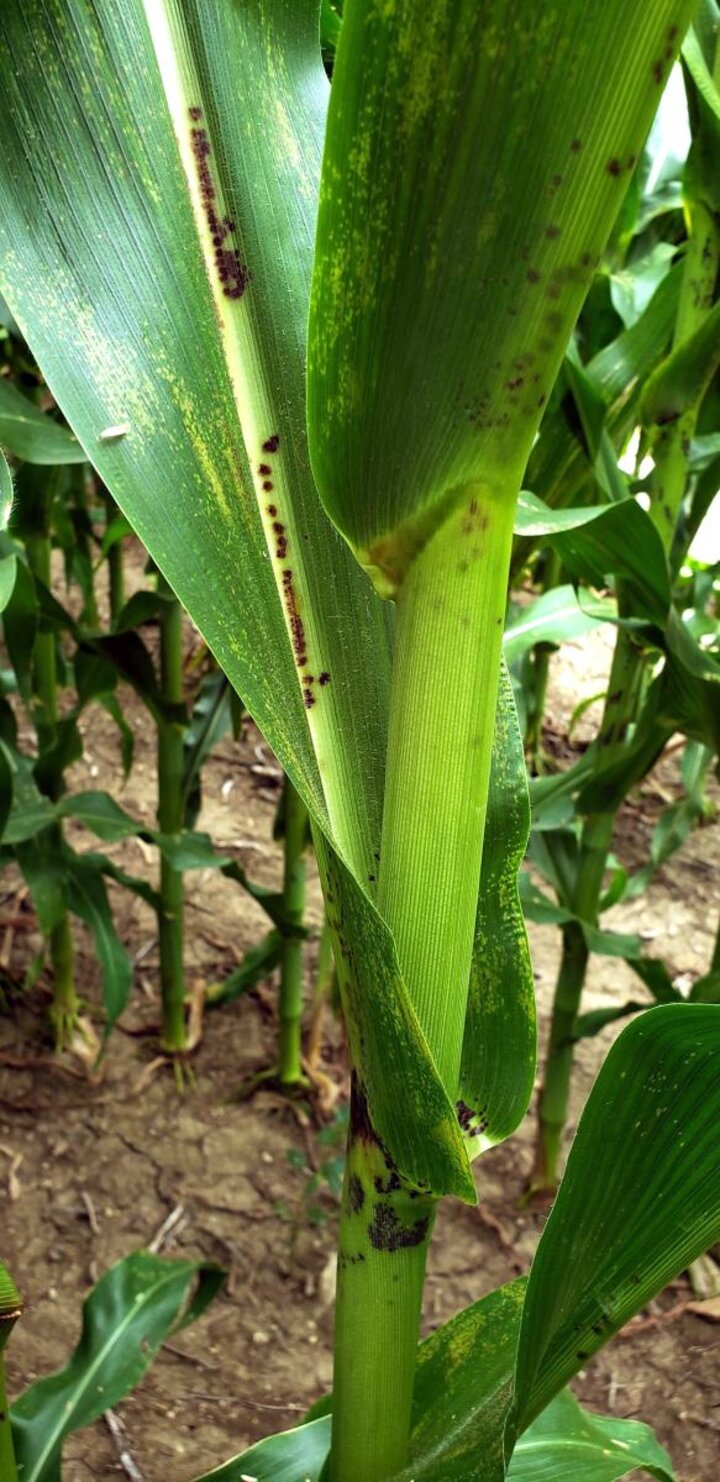
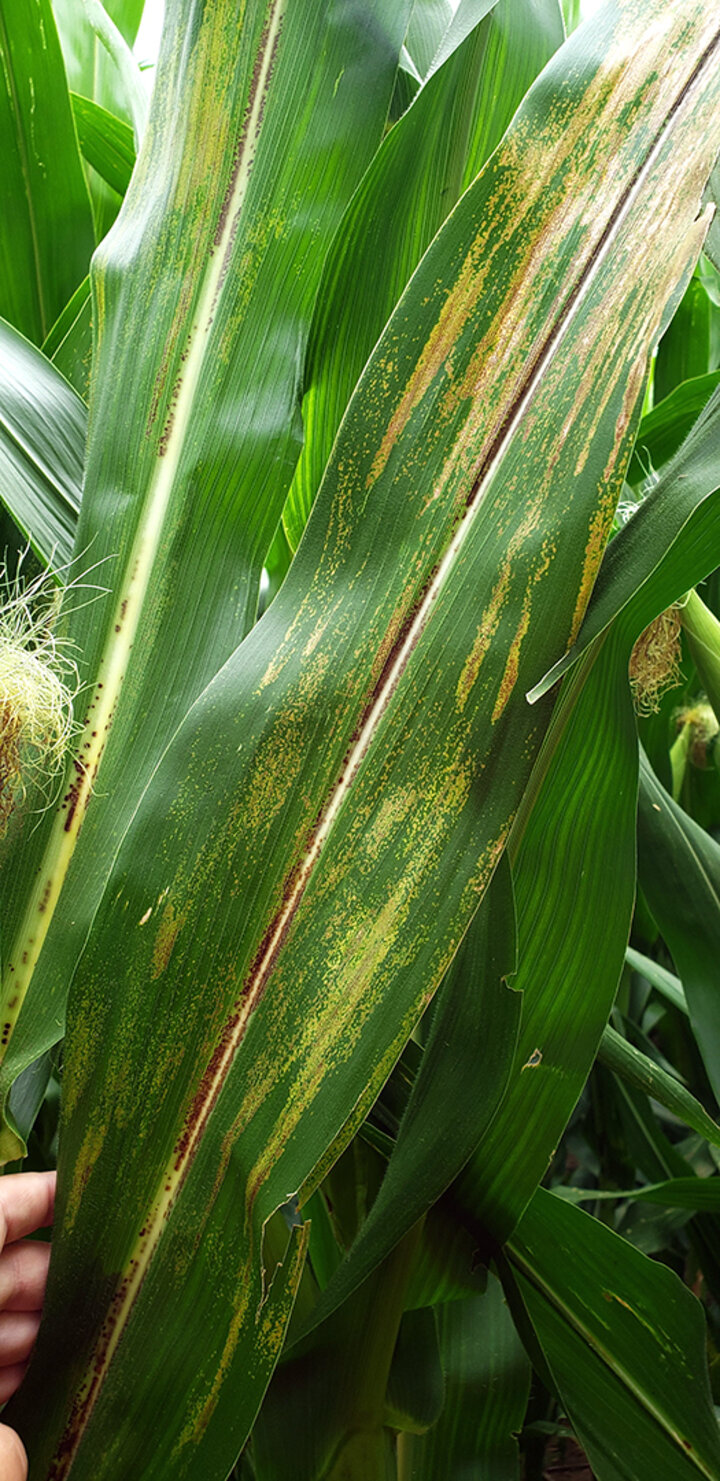
Saprophytic Fungi
Beneficial fungi colonize dead or senesced leaf tissue (not green leaves) and may also create black spots that can be confused with tar spot. The margins of their spots are not as clearly defined as those of disease lesions. These fungi help to break down plant residue to recycle it in the soil for nutrient release. These saprophytes usually have a dusty appearance on leaves and may not produce raised bumps seen with tar spot or rust pustules.
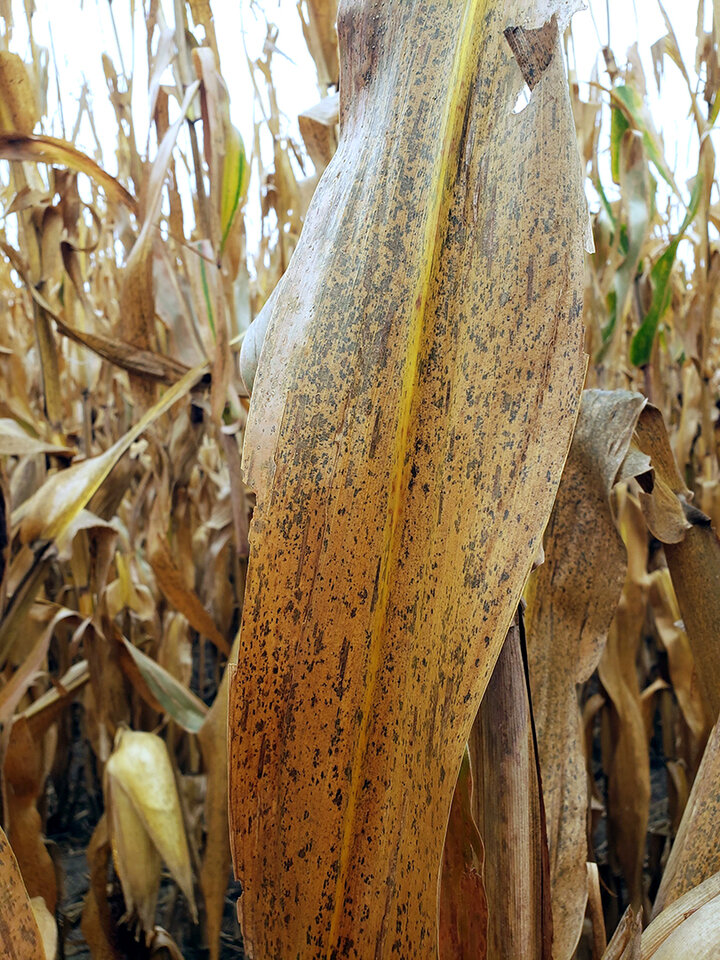
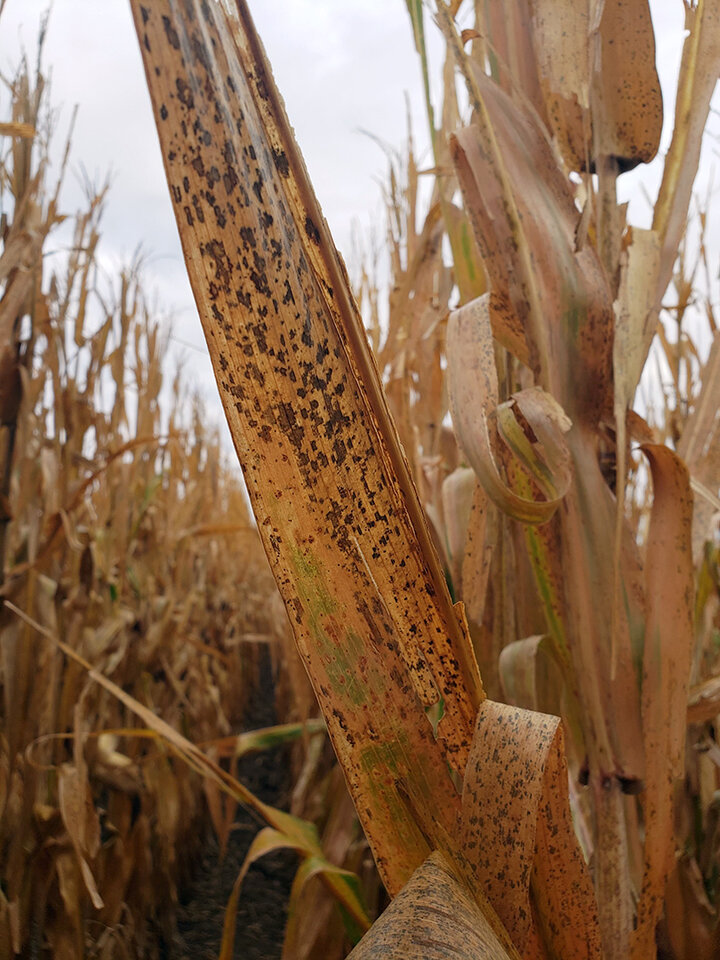
For More Information
When viewing distribution maps like these, keep in mind that highlighted counties indicate a sample from one or more fields in that county tested positive. Counties that are not highlighted does not indicate an absence of the disease. Likewise, highlighted counties do not imply that every field is affected or indicate severity of the disease in the fields where it was found. Samples with the fungus are required to confirm presence of the disease since disease symptoms may appear similar to diseases. It’s also possible to see more than one disease on a leaf, especially later in the season.
If you see symptoms that look like tar spot on corn — especially in one of the counties where the disease hasn’t been confirmed — please reach out to someone in Nebraska Extension or send samples to the UNL Plant and Pest Diagnostic Clinic. The fungus will continue to overwinter in Nebraska corn fields and disease will redevelop and continue to spread. Most fields have very minor disease with no impact on yield. Eventually, as the fungal inoculum builds in corn fields over time and disease becomes more severe, it may become a threat to yield and require active disease management to minimize and prevent economic losses to producers. Thus, it is important that we continue to monitor spread of the pathogen to new areas of the state so that local producers and those in the ag industry can be alerted.
Please contact us in Nebraska Extension for more information.
Submit samples to the UNL Plant and Pest Diagnostic Clinic and enclose a completed sample submission form.
